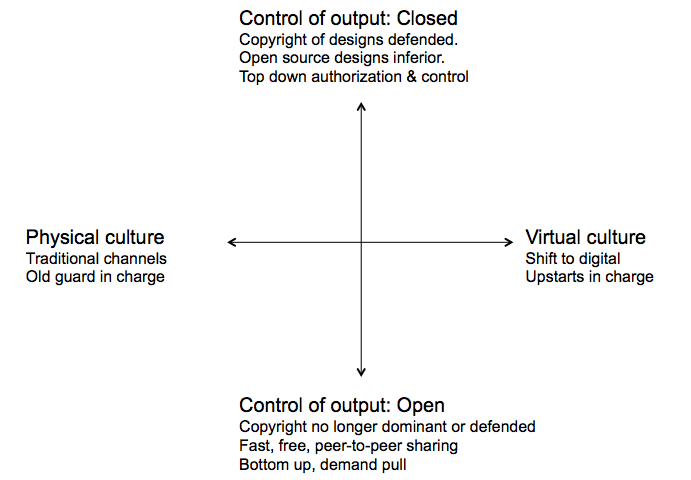Just been playing around with a scenario matrix for the future of 3D printing. The vertical axis seems obvious – whether control remains closed or opens up (i.e. is the copyright of designs vigorously defended or opened up). The horizontal axis is much less clear and currently seems to close to the vertical (you could argue that both are identical, which is useless). Anyway, it’s a start.
What's Next: Top Trends
Diary of an accidental futurist – observations on current & future trends


3D printing challenges copyright (or Intellectual Property Rights) slightly differently to the diagram above. Purely personal use of 3D printing to make copies of household objects and spare parts does not infringe IP rights. Selling it does. This opens a huge can of worms – about selling designs (not the actual item), and open source designs. This quickly turns your simple diagram into a snowflake!
We did a similar exercise a year ago, you might want to check it out: http://urn.fi/URN:ISBN:978-952-60-3634-2 (page 134)
I can see people duplicating objects at home, but a key use would surely be the repair of broken things or bits of things, which would, I imagine, involve buying a design, even for a small internal part. You are right that the matrix is pants (2 minutes thought), but the question of whether or not designs are defended, opened up, co-created or widely ignored is surely key.